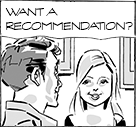Page 45 Review by Stephen
An exquisitely beautiful book with a refined palette restricted to pale creams and antler greys enriched with earthen warmth then printed on thick, calico-coloured paper.
When deep olive greens finally make an appearance they lie far from coincidentally inside and just outside Mr Hubert's flat: the Swiss Cheese Plant rising from behind his armchair and the more delicate leafy foliage of his neighbour's window box, opposite, below.
Suspended in space, in the middle of otherwise empty pages, that window forms the occasional focus of Mr Hubert's attention through his own, while he paints portraits of women from photographs he has taken in a Brussels art gallery, then enlarged on his laptop.
Mr Hubert is a great admirer of these classical paintings, visiting the museum almost every weekend to spend hours fixated on a single tableaux.
It's there we begin, Gijsemans reproducing one's experience of being absorbed in a painting - the eyes being drawn into then over different details before attempting to assess the whole - even as others' curiosity is only momentarily piqued or pass by with a specific destination in mind. There are two pages each containing nine square panels encompassing exactly the same space from the same angle as its occupants come and go, including a mother and child.
Come on, love, let's get your coat.
Are we going home?
Only reluctantly does Mr Hubert move on.
It's a very quiet book, light on dialogue, partly because Mr Hubert is a solitary man who lives alone. In addition, he's simply not very good at conversation. When attempted, it's awfully awkward. When his lonely landlady living below invites him in for a drink he usually declines. Perhaps he might accept, just the once.
She likes art too, and has a large reproduction of Manet's Olympia hanging above her mantelpiece. Nude and slightly confrontational, it could be considered a conversation starter. Or a conversation stopper.
It's so quiet that on some of Mr. Hubert's many visits to the museum you can almost hear his footsteps echoing in the empty gallery as he approaches a specific exhibit. But between the calm solemnity of the Fine Art establishment and his equally silent sanctuary, the city itself must be negotiated and Gijsemans suddenly and abruptly throws in an overwhelming double-page spread of complete chaos and cacophony: a kaleidoscope of concrete and cranes - of cityscape impressions lurching at angles against each other without panel gutters to buffer them, as disorientating to our eyes as they are to Mr. Hubert's...!
Then peace is restored once more.
The lines here are too delicate for any of these pages to be described as regimented, even when fixed with the same unyielding focus as when Mr Hubert is persuaded to give a bloke a lift back from Paris to Brussels. But they are very precise. There's a formality to them reflective of the dialogue. It's difficult to know what Mr. Hubert is thinking behind his glasses, behind his eyes. He often seems furtive, uncertain, nervous, perhaps disconcerted, especially when others are taking photographs in the galleries, or ask him to. I think he thinks he's being watched by those two on admissions.
The funniest pages are when Mr. Hubert draws his blinds so that he can no longer be distracted by the opposite window when painting. Or reading. Or watching TV. But he simply can't settle.
Sometimes hiding something, obscuring it from view, can prove far more fixating than leaving it in plain sight.
As Baroque painters Guido Reni or Caravaggio knew very well.

